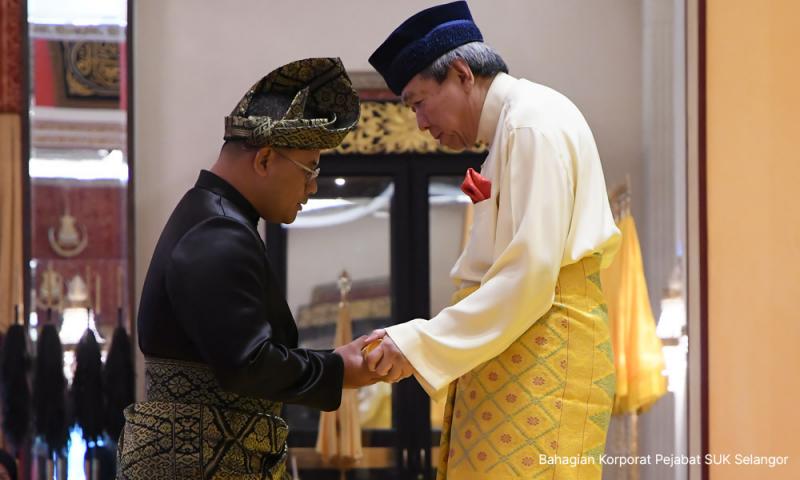ADUN SPEAKS | Selangor - opportunities and challenges
ADUN SPEAKS | I wish to foremost congratulate Amirudin Shari who will continue as the Selangor menteri besar, as well as the new executive council line-up.
The next term is absolutely critical for Selangor, and in the bigger context, Malaysia.
Whilst the people have decided that this government should continue for another five years, much needs to be done to address weary and disenfranchised voters with a view of restoring confidence and hope. I will, in this write-up, highlight three areas of focus.
First, unity.
The fact remains that many are still suspicious of the unity government’s longevity and sincerity. This poses both a challenge and an opportunity.
If handled well, it will prove to be a much-needed healing process for the state. On the contrary, failure to address this fundamental issue may deepen existing cracks.
As a unity government, we must step up the reconciliation process from the ground up. We need to build a clear narrative, identifying shared goals whilst highlighting stability and prosperity.
Throughout the state, specifically in areas where we have lost support, this government must intentionally empower local leaders with the platform, skill and funding to speak of these issues from a local perspective.
It goes beyond uniformity, ie simply using the “Malaysia Madani” logo. Local leaders must be called in and trained on how to apply the concept through various programmes and platforms and drive home the need to continue emphasising its relevance.
The state should also perform frequent audits to determine the efficacy of its messaging.
The objective must be to bring all sides to the centre. The vision is that all quarters should be confident of our identity as Malaysians and at the same time, accept and celebrate diversity. We should not pander too far to the right or to the left as there are already strong, pre-existing players in these fields.
Given the support towards these parties, we are unlikely to outplay them. More importantly, in the long run, a middle Malaysia is the only sustainable option.
The second and these areas that I’d like to highlight are related – revenue and green policy. I will address them together.
It is a known fact that 80 percent of the state’s revenue is from land. These come in the form of quit rent and land premiums. With land as a depleting resource, there is an urgent need for Selangor to diversify and seek out other streams of revenue.
For the purpose of expediency, it may be tempting to look towards development, ie erecting new buildings and townships – the logic is that the state will be able to rake in sales, and development charges and establish new streams of quit rent.
The fear, as is increasingly evident in the years of late, is that doing so would put natural resources at risk.

Carbon emission
An alternative that the state can consider would be to look at how we can monetise matters within its jurisdiction, whilst maintaining a strong green policy.
A few opportunities present themselves – one, with forestry as part of state jurisdiction, carbon credits become a game changer. The state can use its rich forests to help companies and governments fulfil their net zero or carbon emission reduction obligations. Instead of preservation being considered an expense, carbon credits can transform it into a source of income.
With the institutionalisation of a carbon footprint calculation, the system naturally creates a push towards green projects such as reforestation, building renewable energy, carbon-storing agricultural practices and so on. There is a clear direct impact on jobs in this regard.
Two, given that countries around the world are adopting sustainable trade with a view of integrating economies into cross-border sustainable value chains, it is critical for Selangor to assist our business to adapt to those standards so as to ensure that local players remain competitive.
Businesses may feel hard-pressed in the short run, but with a clear blueprint over a reasonable length of time to cushion the impact – our business should adapt towards success.
A good example is how the wood industry in Malaysia is moving away from logging towards harvesting. This is a result of the push from international certifications such as the Forest Stewardship Council and the Programme for the Endorsement of Forest Certification, which looks into ensuring that wood is sustainably sourced.
There is likely to come a time when products will be banned from certain countries if they are made of wood not certified by these bodies, thereby causing industry players and the state to lose out on opportunities.
In terms of policy – aside from the logging moratorium already in place in Selangor – the state should also look at matching grants to encourage the industry to adapt, and gazette more land specifically for sustainable agriculture.
Three, with rivers as part of state jurisdiction, we need to hasten efforts to transition businesses towards a zero-discharge policy and adopt a polluter’s pay principle.
Companies should be encouraged to treat and recycle discharge, but if they choose to release said discharge – companies should be made to pay an amount proportionate to its volume.
I am aware of the challenges in enforcing such a system, but that is an article for another time.
The point of this article is that doing so would help our rivers become cleaner, whilst creating a new stream of revenue.
With each new term, the issues that a government will face become increasingly challenging. But if done right, they immediately become transformative opportunities.
All the best to the new administration – may you bring Selangor to greater heights.
MICHELLE NG is Subang Jaya assemblyperson.
The views expressed here are those of the author/contributor and do not necessarily represent the views of Malaysiakini.
RM12.50 / month
- Unlimited access to award-winning journalism
- Comment and share your opinions on all our articles
- Gift interesting stories to your friends
- Tax deductable
